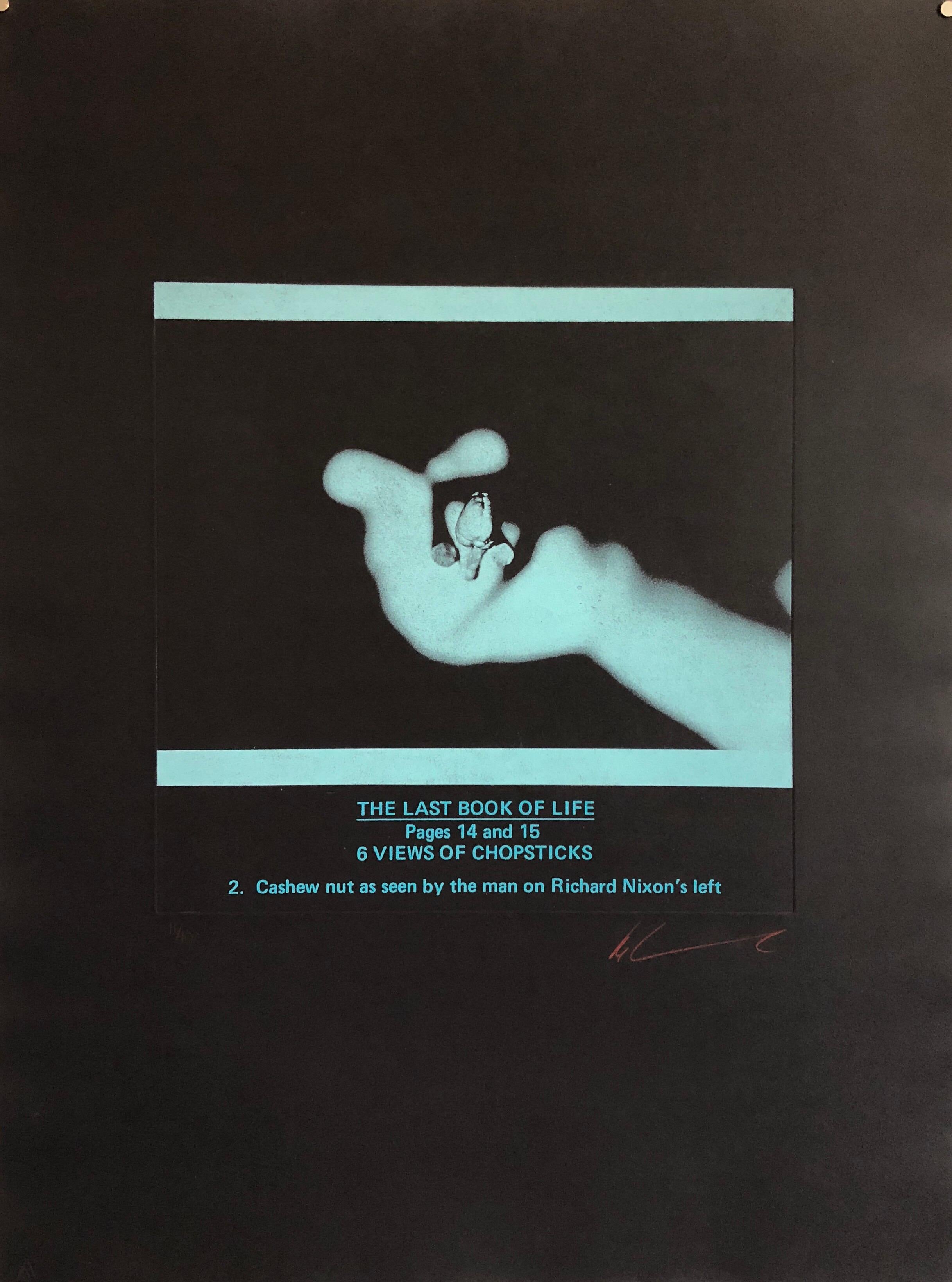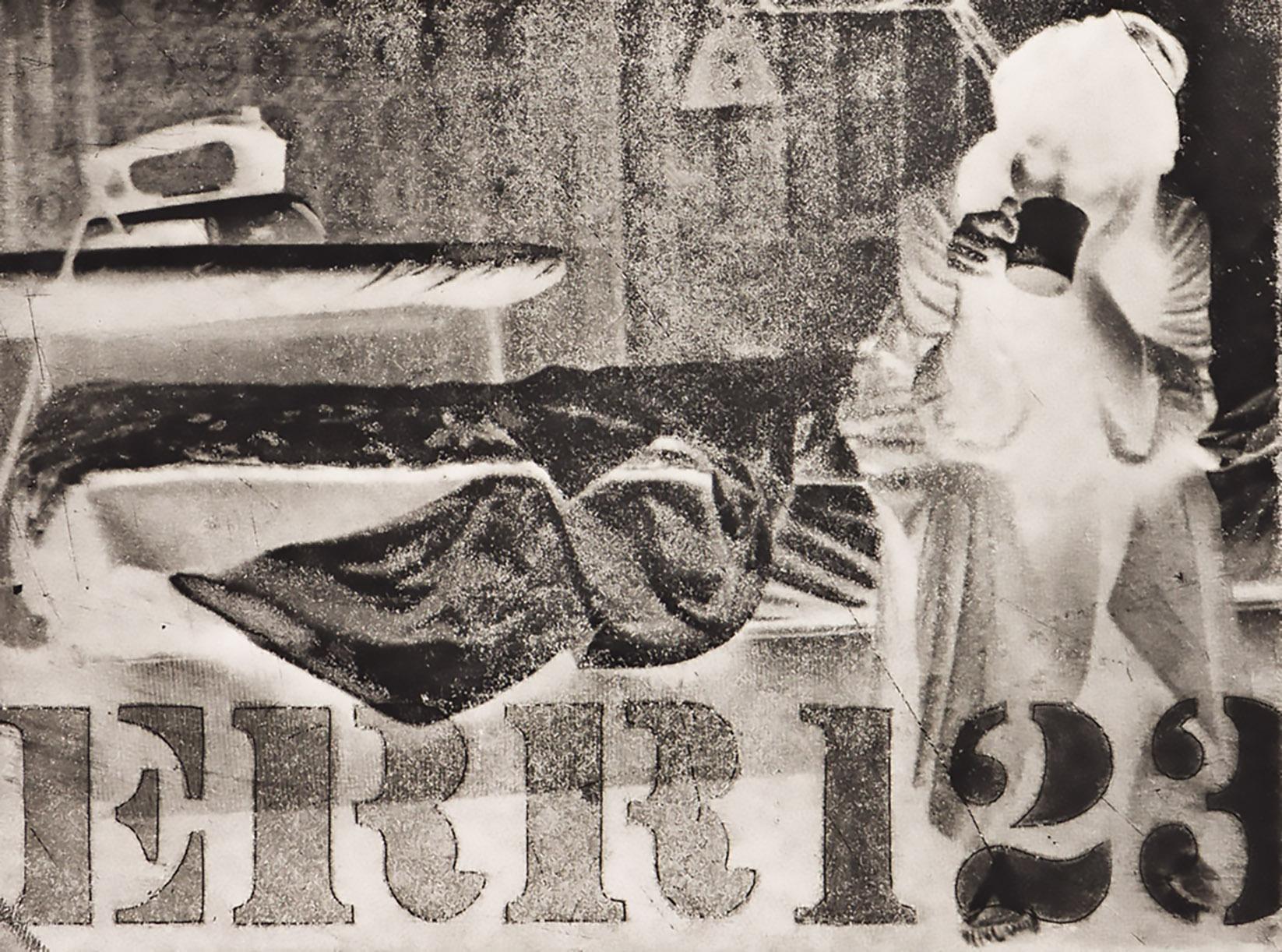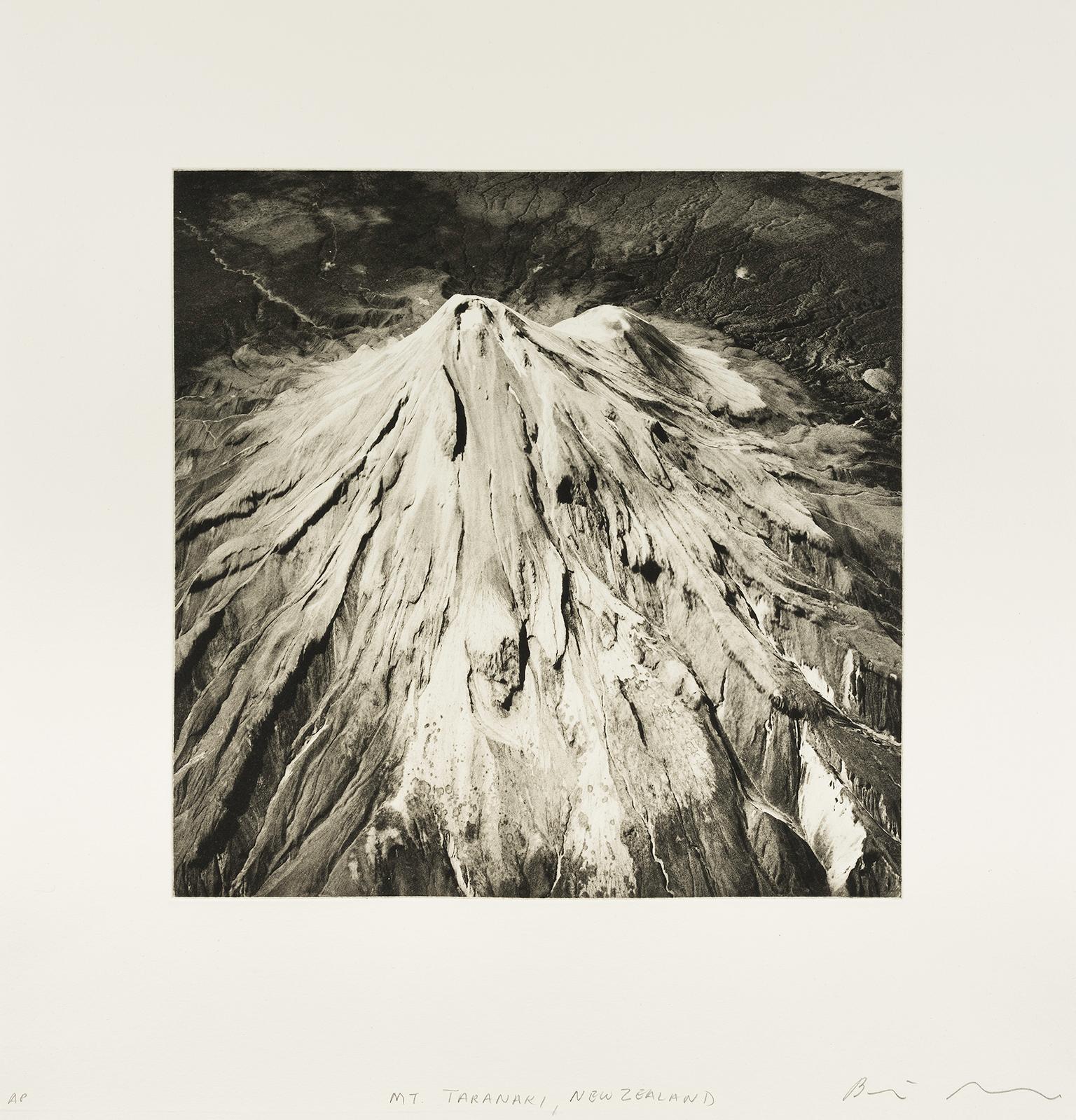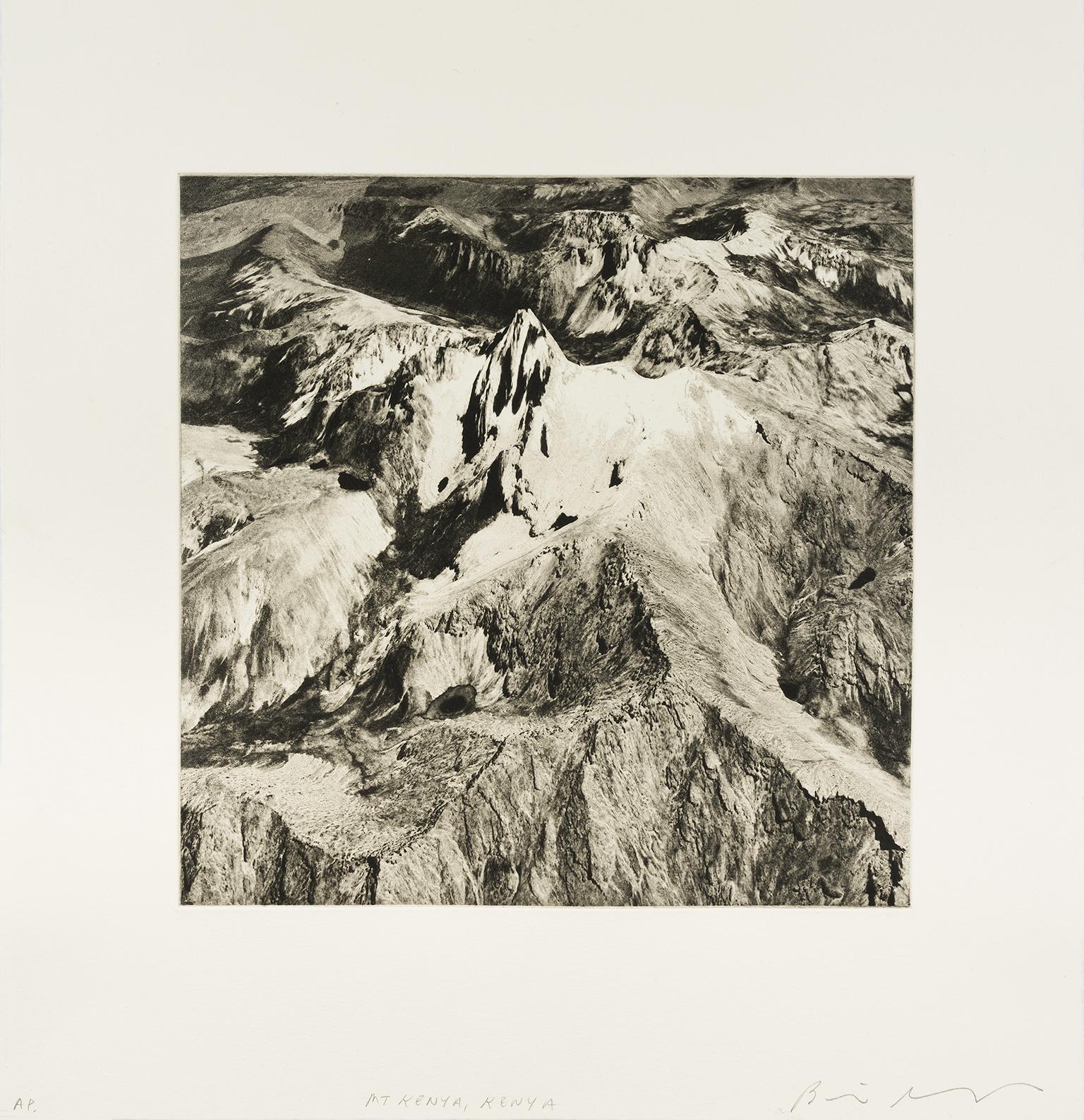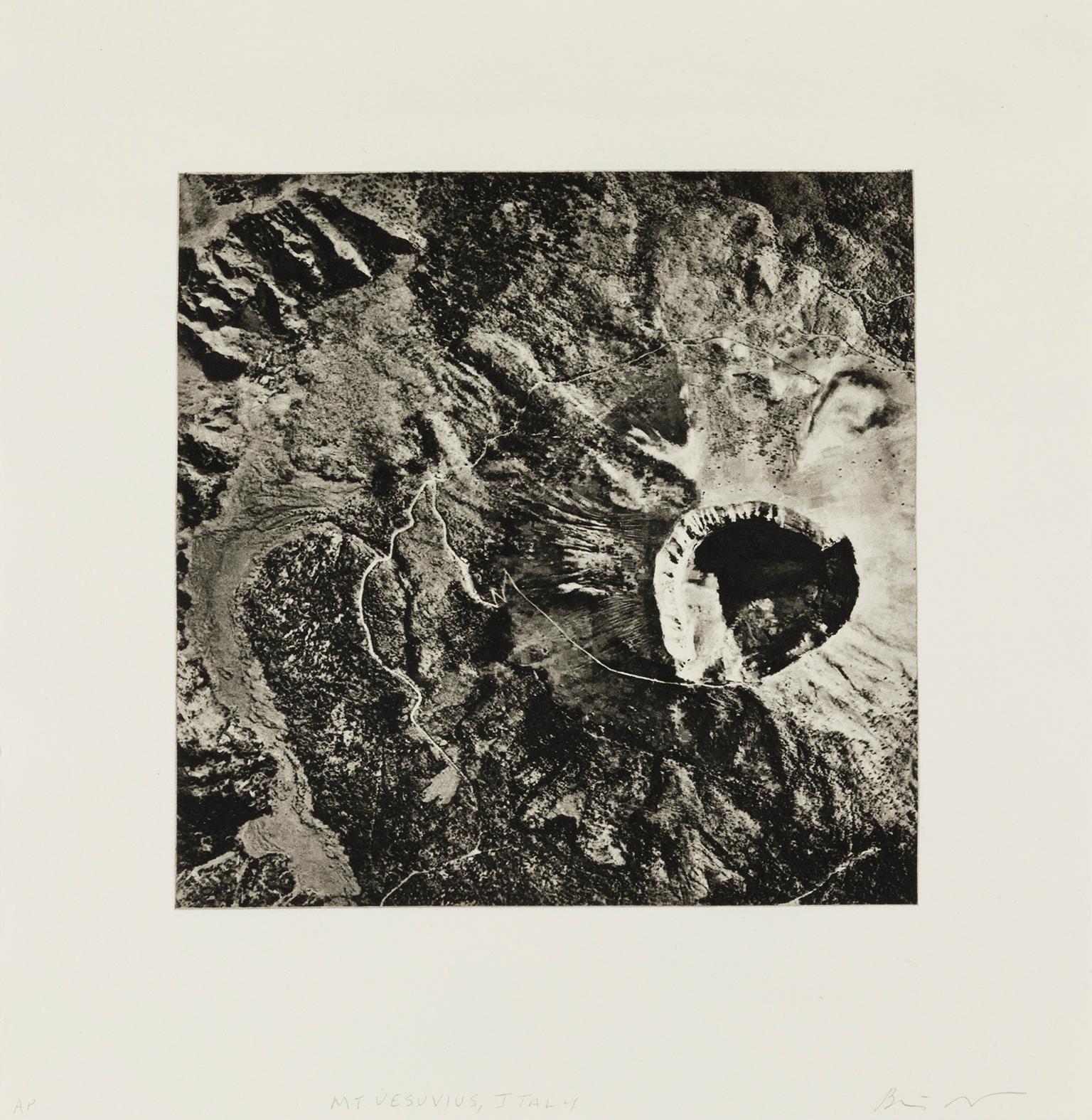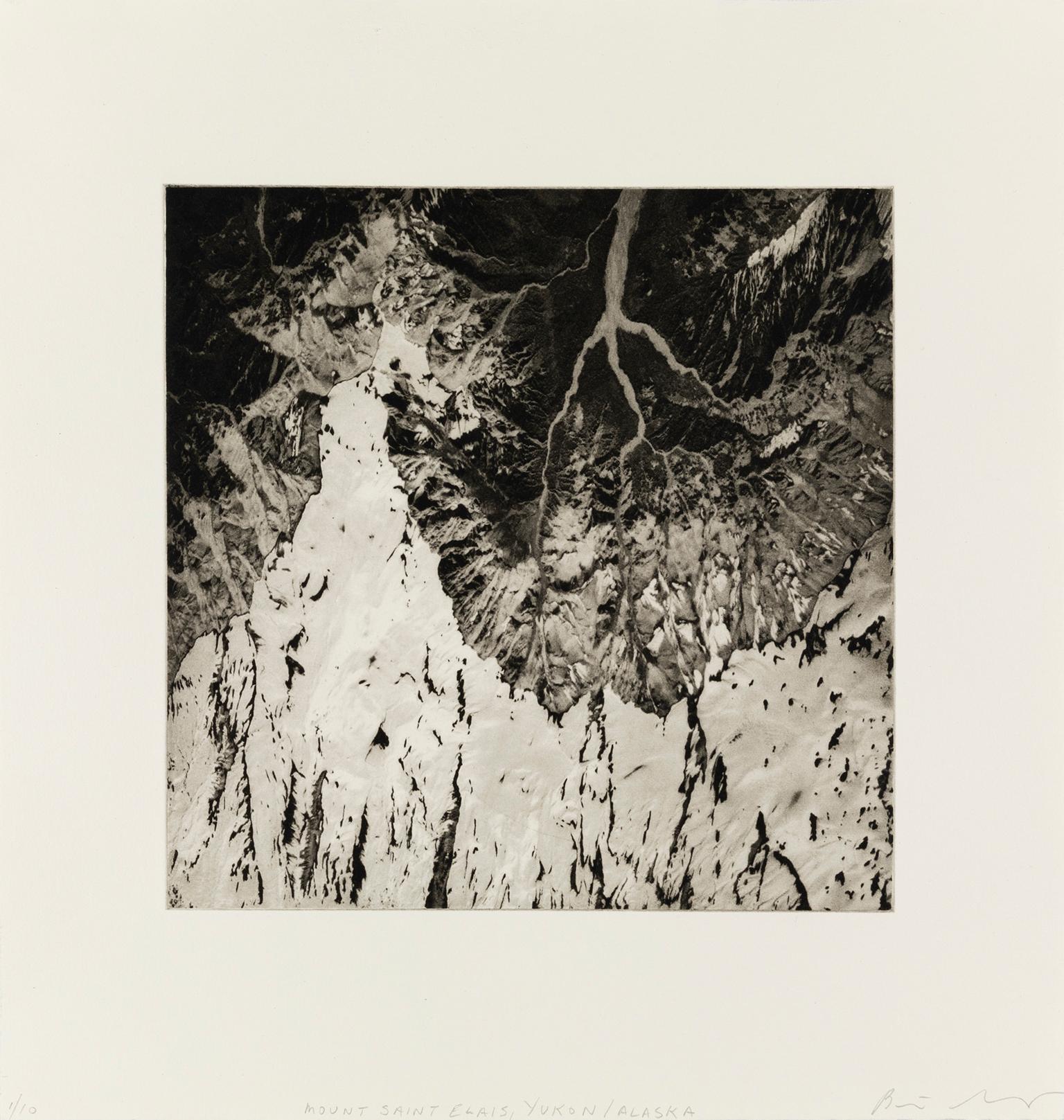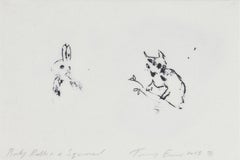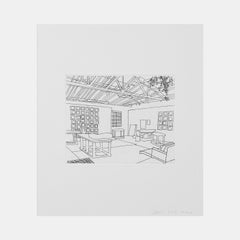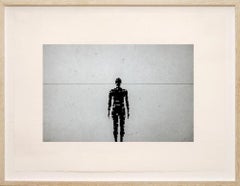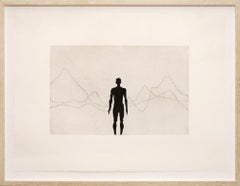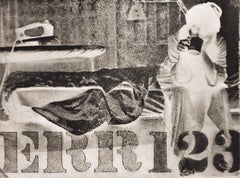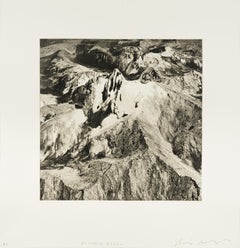Items Similar to From the Cave (2010) (signed)
Want more images or videos?
Request additional images or videos from the seller
1 of 8
Antony GormleyFrom the Cave (2010) (signed)2010
2010
About the Item
Photogravure etching, 2010, signed, titled, dated and numbered from the edition of 50 in pencil, on Fabriano paper, with full margins, 254 x 339mm
Dimensions are 25.4 x 33.9 cm. Edition 37/50
- Creator:Antony Gormley (1950, British)
- Creation Year:2010
- Dimensions:Height: 10.01 in (25.4 cm)Width: 13.35 in (33.9 cm)
- More Editions & Sizes:25.4 x 33.9 cm, Edition of 50Price: $5,288
- Medium:
- Period:
- Condition:The print is in good condition.
- Gallery Location:Woodbury, CT
- Reference Number:1stDibs: LU50738252002
Antony Gormley
Antony Gormley was born and raised in Hampstead Garden Suburb, attending Ampleforth College, a Benedictine Boarding school in Yorkshire. Gormley went on to study Archaeology, Anthropology and History of Art at Trinity College, Cambridge, from 1968-1971. From 1974, Gormley attended Saint Martin’s School of Art and Goldsmiths in London, going on to complete his studies with a postgraduate course in sculpture at the Slade School of Fine Art, London, where he graduated from in 1979.
Gormley’s first solo exhibition took place at the Whitechapel Art Gallery in 1981. The vast majority of Gormley’s work takes the human body as subject, recasting it from conceptions of the body as appearance-based object to a world of subjective experience in which we inhabit. The 2006 Sydney Biennale featured an installation of 180,000 small clay figurines, one of Gormley’s best known and acclaimed works entitled Asian Field. In 2006, the burning of Gormley’s 25-metre high The Waste Man formed the zenith of the Margate Exodus. In 2007, Gormley’s 31 life size, anatomically exact casts of his body were installed on top of prominent buildings along South Bank in London and Madison Square in New York. In 2009, Gormley invited members of the public to spend one hour on the vacant plinth in Trafalgar Square in London as Part of a living art exhibition. In 2012, Gormley begun experimenting with digital cubism, and in 2015, five life sized sculptures were placed near the centre and at four compass points of the UK in a commission to celebrate the Landmark Trust’s 50th anniversary; Gormley named this collection Land. Gormley has received international recognition for his work, winning the Turner Prize in 1994, appointed a Royal Academician in 2003, made a trustee of the British Museum in 2007 and won the Laurance Olivier Award for Outstanding Achievement in Dance for his set design for Babel at Sadler’s Wells. Gormley won the Obayashi Prize in 2012 and was knighted in the 2014 New Year Honours for his services to the arts. Collectors of his work and Public Art locations include the Tate Gallery; Winchester Cathedral; Victoria Square, Birmingham; Mo i Rana, Noway; Crosby Beach; Greenwhich; Mansfield College; the British Library; Manchester Art Gallery; Lake Ballard, Australia; the Archaeological Park of Scolacium, Calabria; Hayward Gallery, London; DeCordova Museum and Sculpture Park; Christchurch, New Zealand and the Anchorage Museum, Alaska.
About the Seller
5.0
Vetted Professional Seller
Every seller passes strict standards for authenticity and reliability
Established in 1983
1stDibs seller since 2016
481 sales on 1stDibs
Typical response time: <1 hour
- ShippingRetrieving quote...Shipping from: Woodbury, CT
- Return Policy
Authenticity Guarantee
In the unlikely event there’s an issue with an item’s authenticity, contact us within 1 year for a full refund. DetailsMoney-Back Guarantee
If your item is not as described, is damaged in transit, or does not arrive, contact us within 7 days for a full refund. Details24-Hour Cancellation
You have a 24-hour grace period in which to reconsider your purchase, with no questions asked.Vetted Professional Sellers
Our world-class sellers must adhere to strict standards for service and quality, maintaining the integrity of our listings.Price-Match Guarantee
If you find that a seller listed the same item for a lower price elsewhere, we’ll match it.Trusted Global Delivery
Our best-in-class carrier network provides specialized shipping options worldwide, including custom delivery.More From This Seller
View AllBaby Rabbit & Squirrel (2013) (signed)
By Tracey Emin
Located in Woodbury, CT
Polymer gravure etching, 2013, signed in pencil, dated, titled, numbered 44/50, on wove paper.
sheet: 19.7 by 29.5cm.; 7¾ by 11⅝in.
Category
2010s Prints and Multiples
Materials
Etching
Bball Studio (2019) (signed)
By Jonas Wood
Located in Woodbury, CT
Bball Studio, 2019
Etching on white Rives BFK paper
11 × 9 1/2 in
27.9 × 24.1 cm
Edition of 200
Hand-signed and numbered by artist
Signed and numbered with publisher's chop on recto
Category
2010s Prints and Multiples
Materials
Etching
Sublimate (2008) (signed)
By Antony Gormley
Located in Woodbury, CT
Signed etching with aquatint, 2008, signed, titled, dated in pencil and numbered from the edition of 60, on BFK Rives paper, printed by Thumbprint Editions, London, with full margins...
Category
Early 2000s Prints and Multiples
Materials
Aquatint, Etching
Horizon Field (2010) (signed)
By Antony Gormley
Located in Woodbury, CT
ANTONY GORMLEY (B. 1950)
Horizon Field, 2010
Etching on BFK Rives wove paper, signed, dated and titled in pencil verso
Printed by Thumbprint Editions, London, the full sheet, a deckl...
Category
2010s Contemporary Prints and Multiples
Materials
Etching
Kate Moss (2006) (signed)
By Tracey Emin
Located in Woodbury, CT
Signed, titled, dated and numbered edition of 250 plus 42 artist's proofs. Published by White Cube, London in 2006.
Unframed polymer-gravure etching, on Zerkall paper, with full mar...
Category
Early 2000s Prints and Multiples
Materials
Polymer, Etching
English early 20th century, A Common Hare in a landscape
By Archibald Thorburn
Located in Woodbury, CT
Wonderful Vintage Archibald Thorburn colored chromolithograph.
The colors are amazing, giving the painting a really great appearance .
Printed circa 1919, the picture is inscribed ...
Category
1910s Victorian Animal Prints
Materials
Paper
You May Also Like
Large Conceptual "Last Book of Life" Photo Etching 1970s Pop Art Photograph
By Les Levine
Located in Surfside, FL
Last Book of Life. (Photos from a dinner of Richard Nixon’s with Chou En Lai’s various views of Chinese chopsticks)
Photograph etchings
Printed on Stone...
Category
1970s Conceptual Abstract Prints
Materials
Etching, Photogravure
Signed 1963 ROBERT INDIANA print (Robert Indiana prints)
By Robert Indiana
Located in NEW YORK, NY
Robert Indiana ERR 1963:
A rare, sought-after early Robert Indiana print defined by surreal, experimental cinematic-like energy. Hand-signed by Indiana on the lower right.
Medium: Photoengraving and etching on Rives BFK.
Dimensions: 4 1/2x6 inches (including margins).
Very good overall vintage condition.
Signed, dated and inscribed "Artist's Proof 'E'" and "CHI" in pencil, lower margin.
Rare Trial proof, aside from the main edition of 60.
Printed by the artist at the School of the Art Institute of Chicago.
Further background:
According to Susan Sheehan, Indiana printed only six progressive trial proofs at the School of the Art Institute of Chicago, where he learned printmaking from 1949 to 1952, under the supervision of Vera Berdich (inscribed "CHI"). Additionally 13 trial proofs were printed at the Pratt Graphic Art Center, New York (these inscribed "NYC"). The regular edition was printed by Atelier Georges Lablanc, Paris and published by Galleria Schwarz, Milan to be included in International Anthology of Contemporary Engraving: The International Avant-Garde: America Discovered, Volume 5. The plate used for this print was originally given to the School of the Art Institute of Chicago by the R.R. Donnelly Company, printers of Life magazine. Indiana discovered the plate while visiting Berdich at the school and decided to use it in his contribution to the Avant-garde portfolio. Sheehan 29.
Robert Indiana 1991:
"When I went back to the Art Institute of Chicago at that particular time - I think I was judging a show - I learned that Vera Berdich (Indiana's former teacher) was still there and the idea occurred to me, wouldn't it be fun to do a visiting artist etching, and she concurred. There on the floor was a box of copper plates and the images had been defaced on each one. These copper plates had been donated by the R.R. Donnelly Company, which put out Life magazine. I used to work for Donnelly. My only commercial art job was with them doing the little drawing that appear in the Yellow Pages, like lawnmowers and vacuum cleaners and things like that. Anyway, the idea being that the student was supposed to turn the plate over to use the back side and forget about the image on the front. But I found this image of this actress sitting on her bed with her ironing board and decided it was only very lightly defaced, so I asked if I could use it. And the word "Err" was actually added in New York; it was not in the first proofs in Chicago. Two weeks later, I was thumbing through LIFE magazine and there was this actress in the same page..."
About the artist:
Robert Indiana is best known for his iconic “LOVE” image, which has appeared across media including sculptures, prints, and paintings and epitomizes the artist’s graphic, predominantly text-based Pop art practice. Throughout his career, Indiana reimagined the aesthetics of American advertisements...
Category
1960s Surrealist Photography
Materials
Black and White, Engraving, Etching, Photogravure, Lithograph, Screen
'Mount Taranaki, New Zealand' — from the series 'Axis Mundi', Contemporary
Located in Myrtle Beach, SC
Beth Ganz, 'Mount Taranaki, New Zealand', copperplate photogravure etching, edition 10, 2020. Signed, titled, and numbered 6/10 in pencil. A superb, richly-inked impression in warm black ink, on cream, wove, cotton rag paper; the full sheet in excellent condition. Archivally sleeved, unmatted.
Image size 10 1/2 x 10 1/2 inches; sheet size 16 x 15 1/2 inches.
From the artist's series of 64 photogravure etchings 'Axis Mundi'. Additional works from the series are available; please inquire.
Exhibited: 'Photography in Ink, A Look at Contemporary Copper-Plate Photogravure,' Curated by Leandro Villaro, Penumbra Exhibition Space Gallery, Nov 30, 2022 - March 15, 2023.
ABOUT THE IMAGE
Mount Taranaki (Māori: Taranaki Maunga) is a dormant stratovolcano in the Taranaki region on the west coast of New Zealand's North Island. At 2,518 meters (8,261 ft), it is the second-highest mountain on the North Island after Mount Ruapehu. It has a secondary cone, Fanthams Peak (Māori: Panitahi), 1,966 meters (6,450 ft), on its south side.
Taranaki is geologically young, having commenced activity approximately 135,000 years ago. The most recent volcanic activity was the production of a lava dome in the crater and its collapse down the side of the mountain in the 1850s or 1860s. The last major eruption occurred around 1655. Recent research has shown that over the last 9,000 years, minor eruptions have occurred roughly every 90 years on average, with major eruptions every 500 years.
The name Taranaki is from the Māori language. The mountain was named after Rua Taranaki, the first ancestor of the iwi (tribe) called Taranaki, one of several iwi in the region. The Māori word tara means mountain peak, and naki may come from ngaki, meaning ‘clear of vegetation.’ It was also named Pukehaupapa (’ice mountain’) and Pukeonaki (’hill of Naki’) by iwi who lived in the region in "ancient times".
Captain Cook named it Mount Egmont on 11 January 1770 after John...
Category
21st Century and Contemporary Contemporary Landscape Prints
Materials
Etching, Photogravure
'Mount Kenya, Kenya' — from the series 'Axis Mundi', Contemporary
Located in Myrtle Beach, SC
Beth Ganz, 'Mount Kenya, Kenya', copperplate photogravure etching, edition 10, 2020. Signed, titled, and numbered 6/10 in pencil. A superb, richly-inked im...
Category
21st Century and Contemporary Contemporary Landscape Prints
Materials
Etching, Photogravure
'Mount Vesuvius, Italy' — from the series 'Axis Mundi', Contemporary
Located in Myrtle Beach, SC
Beth Ganz, 'Mount Vesuvius, Italy', copperplate photogravure etching, edition 10, 2020. Signed, titled, and numbered 6/10 in pencil. A superb, richly-inked impression in warm black ink, on cream, wove, cotton rag paper; the full sheet in excellent condition. Archivally sleeved, unmatted.
Image size 10 1/2 x 10 1/2 inches; sheet size 16 x 15 1/2 inches.
From the artist's series of 64 photogravure etchings 'Axis Mundi'. Additional works from the series are available; please inquire.
Exhibited: 'Photography in Ink, A Look at Contemporary Copper-Plate Photogravure,' Curated by Leandro Villaro, Penumbra Exhibition Space Gallery, Nov 30, 2022 - March 15, 2023.
ABOUT THE IMAGE
Mount Vesuvius (Italian: Vesuvio) is a somma-stratovolcano located on the Gulf of Naples in Campania, Italy, about 9 km (5.6 mi) east of Naples and a short distance from the shore. It is one of several volcanoes forming the Campanian volcanic arc. Vesuvius consists of a large cone partially encircled by the steep rim of a summit caldera, resulting from the collapse of an earlier, much higher structure.
The eruption of Mount Vesuvius in AD 79, one of the most catastrophic eruptions of all time, destroyed the Roman cities of Pompeii, Herculaneum, Oplontis, Stabiae, and several other settlements. The eruption ejected a cloud of stones, ashes and volcanic gases to a height of 33 km (21 mi). More than 1,000 people are thought to have died in the eruption.
Vesuvius has erupted about three dozen times since. It is the only volcano on Europe's mainland to have erupted in the last hundred years (1929 and 1944). It is regarded as one of the most dangerous volcanoes in the world—3,000,000 people live near enough to be affected by an eruption, with at least 600,000 in the danger zone, the most densely populated volcanic region in the world. Eruptions tend to be violent and explosive; these are known as Plinian eruptions.
Vesuvius has a long historical and literary tradition. It was considered a divinity of the Genius type (a divine nature much like a guardian angel) at the time of the eruption of AD 79: it appears under the inscribed name Vesuvius as a serpent in the decorative frescos of many household shrines, surviving from Pompeii.
The Romans regarded Mount Vesuvius as being devoted to Hercules. The historian Diodorus Siculus relates a tradition that Hercules, in the performance of his labors, passed through the country of nearby Cumae on his way to Sicily and found there a place called 'the Phlegraean Plain' ('plain of fire') 'from a hill which anciently vomited out fire ... now called Vesuvius.' It was inhabited by giant bandits, 'the sons of the Earth'. With the gods' assistance, he pacified the region and continued his journey.
The area around Vesuvius was officially declared a national park on June 5, 1995. The summit of Vesuvius is open to visitors, and the park authorities maintain a small network of paths around the volcano. There is access by road to within 200 meters (660 ft) of the summit and a spiral walkway around the volcano from the road to the crater.
ABOUT THE SERIES 'AXIS MUNDI'
"This body of work focuses on satellite images of sacred mountains around the world—places where heaven and earth are thought to meet. The phenomenon of revering mountains as holy sites is an archetype found in many cultures.
"This shared experience finds a visual echo in the ubiquity of images of the earth that are now available to any person with a computer and an Internet connection. What does the specificity of place mean when we can move across the surface of the earth in seconds and reduce everything to a series of pixels? To me, this process recalls abstract painting, which transforms the specific into gesture and form. Rather than treat digital technology as necessarily destructive to human meaning and experience, my work offers new ways of seeing that are reconcilable with the old. To this end, I combine 19th Century Photogravure technique with 21st Century surveillance captures.
"Axis Mundi consists of 64 copperplate photogravures. The work is laid out in a grid, which is an arbitrary conversion of the visual world into a flat space that happens both on the picture plane and in the data processing. The title refers to the belief in a 'world center,' often conceived of as a mountain: a place where communication between higher and lower realms is possible. This project is a search for such a center in a world of decentralization and fragmentation."
—Beth Ganz
ABOUT THE ARTIST
Beth Ganz is a contemporary American multidisciplinary visual artist, who lives and works in New York City. She graduated from Pratt Institute with a BFA (honors) in Painting, Sculpture, and Printmaking. The focus of her work is the intersection of landscape, digital technology, and abstraction. Ganz works in paint, brush, and ink drawing, both independently and alongside digital and analog printing techniques, including photogravure and intaglio printing.
Ganz’s work has been the subject of many solo exhibitions, including 'Atlas Project' at Cynthia-Reeves Gallery, 'Up Close and Far Away, Grids and Toiles: Beth Ganz at Wave Hill House,' Wave Hill, and 'Geothermal Topographies' at Reeves Contemporary. She has been shown in numerous group exhibitions, and her work is represented in many public and private collections, including the 9-11 Memorial Museum, the Library of Congress, the New York Historical Society, and the New York Public Library Prints...
Category
21st Century and Contemporary Contemporary Landscape Prints
Materials
Etching, Photogravure
'Mount St. Elias, Yukon, Alaska' — from the series 'Axis Mundi', Contemporary
Located in Myrtle Beach, SC
Beth Ganz, 'Mount St. Elias, Yukon, Alaska', copperplate photogravure etching, edition 10, 2021. Signed, titled, and numbered 6/10 in pencil. A superb, richly-inked impression in warm black ink, on cream, wove, cotton rag paper; the full sheet in excellent condition. Archivally sleeved, unmatted.
Image size 10 1/2 x 10 1/2 inches; sheet size 16 x 15 1/2 inches.
From the artist's series of 64 photogravure etchings 'Axis Mundi'. Additional works from the series are available; please inquire.
Exhibited: 'Photography in Ink, A Look at Contemporary Copper-Plate Photogravure,' Curated by Leandro Villaro, Penumbra Exhibition Space Gallery, Nov 30, 2022 - March 15, 2023.
ABOUT THE IMAGE
Mount Saint Elias, the second-highest mountain in Canada and the United States stands on the Yukon and Alaska border about 26 miles (42 km) southwest of Mount Logan, the highest mountain in Canada. The Canadian side of Mount Saint Elias forms part of Kluane National Park and Reserve, while the U.S. side is within Wrangell-St. Elias National Park and Preserve.
Mount Saint Elias is notable for its immense vertical relief. Its summit rises 18,008 feet (5,489 m) vertically in just 10 miles (16 km) horizontal distance from the head of Taan Fjord, off of Icy Bay.
The name of the mountain in Tlingit (indigenous peoples of the Pacific Northwest Coast of North America), Yasʼéitʼaa Shaa, means "mountain behind Icy Bay"; the Yakutat Tlingit occasionally call it Shaa Tlein "Big Mountain". It is one of the most important crests of the Kwaashkʼiḵwáan clan, who used it as a guide during their journey down the Copper River. Mount Fairweather, at the apex of the British Columbia and Alaska borders at the head of the Alaska Panhandle, is known as Tsalx̱aan; legend states that this mountain and Yasʼéitʼaa Shaa (Mt. St. Elias) originally stood next to each other, but had an argument and separated. Their children, the mountains between the two peaks, are called Tsalx̱aan Yátxʼi ("Children of Tsalxaan").
European explorers first sighted the mountain on July 16, 1741, with the arrival of the expedition commanded by Vitus Bering, a Danish explorer in service of Russia. While some historians contend that Bering named the mountain, others believe that eighteenth-century mapmakers named it after Cape Saint Elias when Bering left the peak unnamed.
Mt. St. Elias was first climbed on July 31, 1897, by an Italian expedition led by famed explorer Prince Luigi Amedeo, Duke of the Abruzzi (who also reconnoitered the current standard route on K2 in 1909) and included noted mountain photographer Vittorio Sella.
In 2007 Gerald Salmina directed an Austrian documentary film, Mount St. Elias, about a team of skiers/mountaineers determined to make "the planet's longest skiing descent" by ascending the mountain and then skiing nearly all 18,000 feet down to the Gulf of Alaska; the movie finished editing and underwent limited release in 2009. The climbers ended up summiting on the second attempt and skiing down to 13,000 ft (3,960 m).
ABOUT THE SERIES 'AXIS MUNDI'
"This body of work focuses on satellite images of sacred mountains around the world—places where heaven and earth are thought to meet. The phenomenon of revering mountains as holy sites is an archetype found in many cultures.
"This shared experience finds a visual echo in the ubiquity of images of the earth that are now available to any person with a computer and an Internet connection. What does the specificity of place mean when we can move across the surface of the earth in seconds and reduce everything to a series of pixels? To me, this process recalls abstract painting, which transforms the specific into gesture and form. Rather than treat digital technology as necessarily destructive to human meaning and experience, my work offers new ways of seeing that are reconcilable with the old. To this end, I combine 19th Century Photogravure technique with 21st Century surveillance captures.
"Axis Mundi consists of 64 copperplate photogravures. The work is laid out in a grid, which is an arbitrary conversion of the visual world into a flat space that happens both on the picture plane and in the data processing. The title refers to the belief in a 'world center,' often conceived of as a mountain: a place where communication between higher and lower realms is possible. This project is a search for such a center in a world of decentralization and fragmentation."
—Beth Ganz
ABOUT THE ARTIST
Beth Ganz is a contemporary American multidisciplinary visual artist, who lives and works in New York City. She graduated from Pratt Institute with a BFA (honors) in Painting, Sculpture, and Printmaking. The focus of her work is the intersection of landscape, digital technology, and abstraction. Ganz works in paint, brush, and ink drawing, both independently and alongside digital and analog printing techniques, including photogravure and intaglio printing.
Ganz’s work has been the subject of many solo exhibitions, including 'Atlas Project' at Cynthia-Reeves Gallery, 'Up Close and Far Away, Grids and Toiles: Beth Ganz at Wave Hill House,' Wave Hill, and 'Geothermal Topographies' at Reeves Contemporary. She has been shown in numerous group exhibitions, and her work is represented in many public and private collections, including the 9-11 Memorial Museum, the Library of Congress, the New York Historical Society, and the New York Public Library Prints...
Category
21st Century and Contemporary Contemporary Landscape Prints
Materials
Etching, Photogravure
